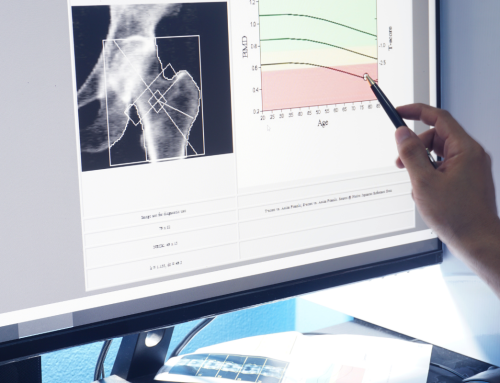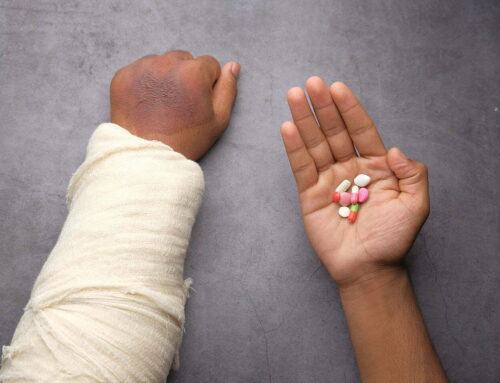
Osteoporosis is a silent and progressive disease that weakens bones, making them brittle and susceptible to fractures. In healthcare, assessing fracture risk is paramount to managing this condition effectively. Enter the CAROC score—a valuable tool for gauging fracture risk among patients.
The CAROC score, developed by the Canadian Association of Radiologists and Osteoporosis Canada, offers healthcare professionals a systematic approach to evaluating fracture risk. This blog post explores how the CAROC score is utilized in clinical practice to assess fracture risk and guide patient care.
Understanding the CAROC Score
Originating from a collaboration between radiologists and osteoporosis experts in Canada, the CAROC (Canadian Association of Radiologists and Osteoporosis Canada) score is a comprehensive tool for assessing fracture risk. By evaluating key factors such as age, sex, and bone mineral density, it offers a holistic view of a patient's bone health. This enables healthcare providers to identify individuals at risk of fractures and intervene with appropriate treatments in a timely manner.
Significance of the CAROC Score in Assessing Fracture Risk
Early and accurate fracture risk assessment is crucial for preventing debilitating injuries. The CAROC score excels in predicting fracture risk by offering a structured evaluation process. It empowers healthcare professionals to customize treatment plans, improving patient outcomes and proactive health management.
By utilizing the CAROC score, providers can tailor interventions based on individual risk profiles. This personalized approach ensures that patients receive the most effective treatments, ultimately reducing the likelihood of fractures and enhancing overall bone health.
Methodology Behind the CAROC Score
The methodology behind the CAROC score involves a comprehensive scoring process. Various factors are taken into account, including age, sex, and bone mineral density (BMD). These elements are combined to categorize patients into low, moderate, or high risk for fractures.
Understanding these risk categories enables healthcare professionals to make informed decisions about treatment strategies. Patients in the high-risk category may require more aggressive interventions, while those at lower risk can benefit from preventive measures and lifestyle modifications.
Factors Influencing the CAROC Score
Several primary factors contribute to the CAROC score, with age, bone mineral density, and fracture history being key determinants. These elements provide a baseline for assessing fracture risk and guide healthcare providers in tailoring interventions.
Additionally, lifestyle factors, medication use, and family history play a role in shaping the overall score. By considering these additional aspects, healthcare professionals can comprehensively understand a patient's fracture risk and develop targeted treatment plans.
Comparison With Other Risk Assessment Tools
The CAROC score is one of many tools for fracture risk assessment. Tools like FRAX and QFracture also offer valuable insights. However, each system has its unique strengths and limitations.
The CAROC score stands out for its simplicity and ease of use, making it a preferred choice for many healthcare providers. While FRAX focuses on a broader range of factors, CAROC offers a more streamlined approach without compromising accuracy.
Practical Applications in Clinical Settings
The practical applications of the CAROC score in clinical settings are extensive. Healthcare providers rely on this tool to guide treatment decisions, ensuring that patients receive optimal care based on their individual risk profiles.
Case studies demonstrate the effectiveness of the CAROC score in action. By integrating this tool into standard practice, healthcare professionals can proactively manage fracture risk and improve patient outcomes.
The CAROC score offers significant benefits in fracture risk assessment, providing healthcare professionals with a structured and reliable tool. Its ability to predict fracture risk and personalize patient care plans makes it a valuable asset in osteoporosis management.
While the CAROC score has its limitations, ongoing research and advancements continue to refine its effectiveness. By incorporating this tool into clinical practice, healthcare providers can enhance patient outcomes and promote proactive health management.
For healthcare professionals, considering the CAROC score in their practice can lead to better patient care and improved bone health outcomes. Patients are encouraged to discuss fracture risk assessment with their healthcare providers, ensuring that they receive the most appropriate interventions for their needs.
By leveraging the CAROC score, healthcare professionals can make informed decisions that contribute to better bone health and improved quality of life for their patients.
Integrating the use of advanced technologies like the Marodyne LIV device into patient care plans can significantly enhance the efficacy of osteoporosis management strategies informed by the CAROC score.
The Marodyne LIV is a groundbreaking low-intensity vibration therapy designed to improve bone density safely and effectively, making it an innovative complement to fracture risk assessments. By providing gentle mechanical stimulation, this device supports bone health and can be a vital component of a personalized treatment plan aimed at reducing fracture risk.
Patients and healthcare providers seeking to incorporate leading-edge solutions into bone health management are encouraged to contact Marodyne to learn more about how the LIV device can benefit their specific needs and enhance overall outcomes.
Have you heard of the CAROC score before this article? What surprised you about the assessment tool? Share your thoughts with our readers in the comments below.




 Black Friday → Christmas Sale! Save $300 + Free Shipping
Black Friday → Christmas Sale! Save $300 + Free Shipping 